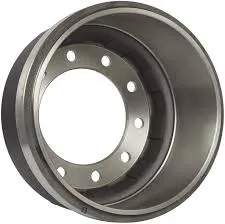
-
 Afrikaans
Afrikaans -
 Albanian
Albanian -
 Amharic
Amharic -
 Arabic
Arabic -
 Armenian
Armenian -
 Azerbaijani
Azerbaijani -
 Basque
Basque -
 Belarusian
Belarusian -
 Bengali
Bengali -
 Bosnian
Bosnian -
 Bulgarian
Bulgarian -
 Catalan
Catalan -
 Cebuano
Cebuano -
 Corsican
Corsican -
 Croatian
Croatian -
 Czech
Czech -
 Danish
Danish -
 Dutch
Dutch -
 English
English -
 Esperanto
Esperanto -
 Estonian
Estonian -
 Finnish
Finnish -
 French
French -
 Frisian
Frisian -
 Galician
Galician -
 Georgian
Georgian -
 German
German -
 Greek
Greek -
 Gujarati
Gujarati -
 Haitian Creole
Haitian Creole -
 hausa
hausa -
 hawaiian
hawaiian -
 Hebrew
Hebrew -
 Hindi
Hindi -
 Miao
Miao -
 Hungarian
Hungarian -
 Icelandic
Icelandic -
 igbo
igbo -
 Indonesian
Indonesian -
 irish
irish -
 Italian
Italian -
 Japanese
Japanese -
 Javanese
Javanese -
 Kannada
Kannada -
 kazakh
kazakh -
 Khmer
Khmer -
 Rwandese
Rwandese -
 Korean
Korean -
 Kurdish
Kurdish -
 Kyrgyz
Kyrgyz -
 Lao
Lao -
 Latin
Latin -
 Latvian
Latvian -
 Lithuanian
Lithuanian -
 Luxembourgish
Luxembourgish -
 Macedonian
Macedonian -
 Malgashi
Malgashi -
 Malay
Malay -
 Malayalam
Malayalam -
 Maltese
Maltese -
 Maori
Maori -
 Marathi
Marathi -
 Mongolian
Mongolian -
 Myanmar
Myanmar -
 Nepali
Nepali -
 Norwegian
Norwegian -
 Norwegian
Norwegian -
 Occitan
Occitan -
 Pashto
Pashto -
 Persian
Persian -
 Polish
Polish -
 Portuguese
Portuguese -
 Punjabi
Punjabi -
 Romanian
Romanian -
 Russian
Russian -
 Samoan
Samoan -
 Scottish Gaelic
Scottish Gaelic -
 Serbian
Serbian -
 Sesotho
Sesotho -
 Shona
Shona -
 Sindhi
Sindhi -
 Sinhala
Sinhala -
 Slovak
Slovak -
 Slovenian
Slovenian -
 Somali
Somali -
 Spanish
Spanish -
 Sundanese
Sundanese -
 Swahili
Swahili -
 Swedish
Swedish -
 Tagalog
Tagalog -
 Tajik
Tajik -
 Tamil
Tamil -
 Tatar
Tatar -
 Telugu
Telugu -
 Thai
Thai -
 Turkish
Turkish -
 Turkmen
Turkmen -
 Ukrainian
Ukrainian -
 Urdu
Urdu -
 Uighur
Uighur -
 Uzbek
Uzbek -
 Vietnamese
Vietnamese -
 Welsh
Welsh -
 Bantu
Bantu -
 Yiddish
Yiddish -
 Yoruba
Yoruba -
 Zulu
Zulu
non servo drum brake
Understanding Non-Servo Drum Brakes
Non-servo drum brakes are a type of braking system commonly used in various vehicles, particularly in older models and some light-duty applications. This type of brake system is characterized by its simple design and effective functionality, making it an essential component in automotive technology.
What are Drum Brakes?
Drum brakes consist of a brake drum, brake shoes, and a hydraulic cylinder. When the driver presses the brake pedal, hydraulic fluid is sent to the wheel cylinder, which pushes the brake shoes against the inner surface of the drum. The friction generated between the shoes and the drum slows down the wheel, effectively halting the vehicle.
Characteristics of Non-Servo Drum Brakes
The primary distinguishing feature of non-servo drum brakes is that they do not utilize any mechanical advantage to enhance braking force. In contrast to servo drum brakes, where the design allows the brake shoes to pull tighter against the drum as the wheel rotates (thanks to the brake shoes' shape and arrangement), non-servo drum brakes rely solely on hydraulic force.
This means that the effectiveness of braking in non-servo systems does not increase as the drum spins, resulting in a more linear relationship between pedal pressure and braking force. This design simplicity can be advantageous in terms of manufacturing and maintenance, but it often leads to less efficient braking performance when compared to servo systems, particularly under high-speed conditions.
Applications and Advantages
non servo drum brake

Non-servo drum brakes are often found in the rear brakes of older cars and light trucks. Their design is both straightforward and cost-effective, making them a preferred choice for budget-friendly vehicles and conditions where high performance is not a primary concern. They are also easier to maintain due to fewer components and a simpler operation.
One of the notable advantages of non-servo drum brakes is their ability to provide good braking performance under normal driving conditions. They are resistant to fade, particularly when used in conjunction with proper brake materials. This can make them suitable for light loads and urban driving, where sudden stops might be frequent, yet speeds remain moderate.
Disadvantages
Despite their advantages, non-servo drum brakes have several drawbacks. The lack of mechanical assistance means that they can struggle under heavy braking or when carrying larger loads. Drivers may experience a less responsive brake feel compared to servo-assisted systems, which could impact their confidence in emergency situations.
Moreover, non-servo drum brakes are less effective at dissipating heat, which can lead to brake fade during prolonged heavy braking. As the temperature rises, the friction material can degrade, reducing braking efficiency and potentially leading to unsafe driving conditions.
Conclusion
While non-servo drum brakes may not be the most advanced or efficient braking system available today, they remain a vital component in many vehicles. Understanding their function, advantages, and limitations is crucial for both vehicle manufacturers and drivers. In a world increasingly focused on innovation, non-servo drum brakes serve as a reminder of the fundamental principles of automotive engineering, blending simplicity with effectiveness.
As automotive technology continues to evolve, the role of non-servo drum brakes may diminish, but they still hold a place in the legacy of vehicle history. Whether driving an older model or a light-duty truck, acknowledging the characteristics of the braking system can enhance vehicle safety and performance. Knowledge about non-servo drum brakes equips drivers with the insight needed to make informed decisions about vehicle maintenance and operation, ensuring a safer driving experience on the roads.
-
Rear Drum Brakes Maintenance TipsNewsAug.04,2025
-
Key Components Affecting Brake Drum FunctionNewsAug.04,2025
-
Important Inspection for Truck Drum BrakeNewsAug.04,2025
-
How to Prepare for Changing Rear Drum BrakesNewsAug.04,2025
-
Essential Tools for Cleaning Drum Brakes ProperlyNewsAug.04,2025
-
Brake Drum Function GuideNewsAug.04,2025
-
Safety Features of Red Brake DrumsNewsAug.01,2025
